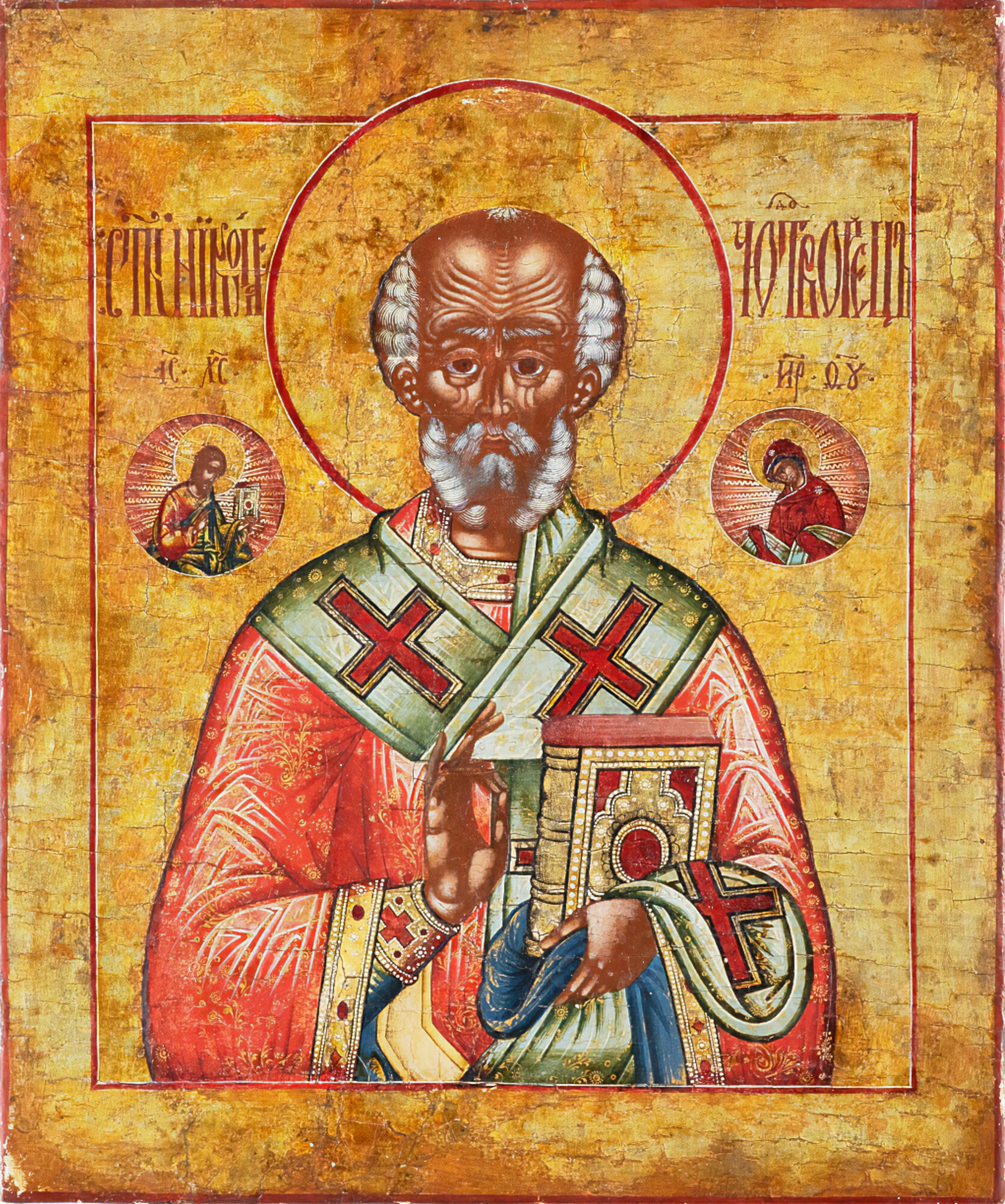This is a traditional half-length image of Saint Nicholas, Archbishop of Myra, also known as Nicholas the Wonderworker. The composition can be traced back to the ancient Russian icons of the 15th–16th centuries. With his right hand, the saint makes a blessing gesture, and in his left hand, he holds a closed Book of the Gospels with a red edge. He wears a bright red phelonion with a golden floral pattern and a gold border with red gemstones, a dark blue surplice, and a green omophorion with a golden geometric floral pattern and red crosses.
The displayed icon is decorated with a silver cover known as an “oklad.” In the mid-18th century, such covers represented an independent type of applied art with its own design and décor features. The iconography of Saint Nicholas was brought to Russia from Byzantium. It was widely spread and diverse.
The oldest and most common images of Saint Nicholas are half-length icons. Saint Nicholas is often flanked by Jesus Christ and the Virgin Mary. Their figures refer to the miracle that took place at the Council of Nicaea in 325. According to church tradition, Saint Nicholas is believed to have slapped the Cyrenaic presbyter Arius for his heretical speech during the debates. As a result, Saint Nicholas was defrocked. However, Jesus Christ and the Virgin Mother appeared to Saint Nicholas and returned the Gospel Book and omophorion — symbols of his priesthood — to him. After that, Nicholas was reinstalled as Archbishop of Myra. Arius became the founder of the Christological doctrine called “Arianism”, which holds that Jesus Christ is the Son of God and not equal to God the Father, a distinct, though similar, substance from the Creator.
According to some theologians, the legend of Nicholas slapping Arius “cannot be recognized as true primarily because it directly contradicts the impeccable moral image of the great Saint, ” and is also in conflict with the teachings of the holy apostles.
Based on the Life of Saint Nicholas the
Wonderworker, he died at an old age. This is why he is always depicted as an
elderly man with a gray beard. These details in the saint’s appearance, such as
a short beard and hair cut just below his ears, are based on oral tradition
that was later recorded in the first icons.



